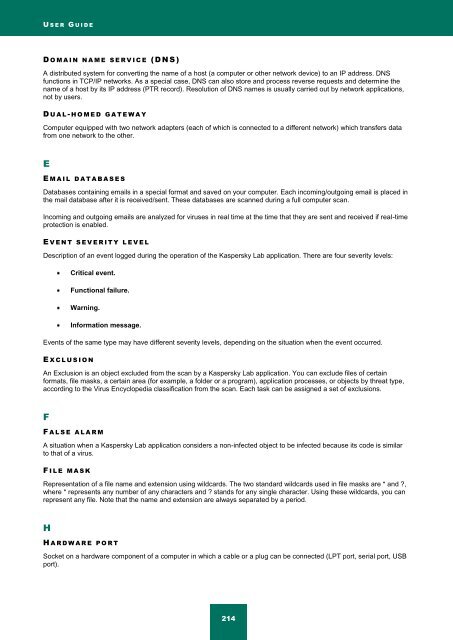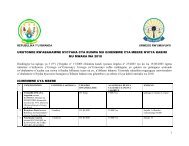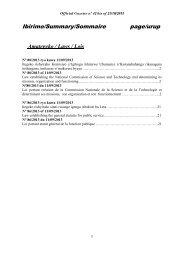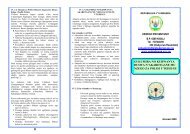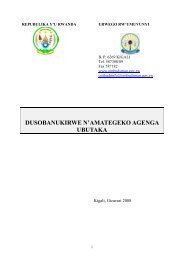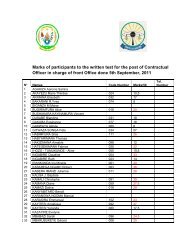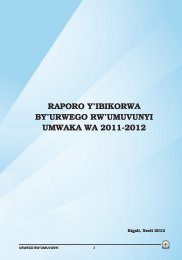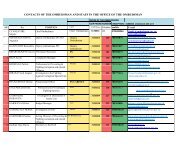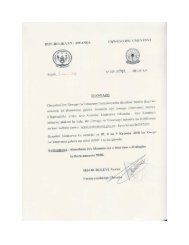Kaspersky Internet Security 2012
Kaspersky Internet Security 2012
Kaspersky Internet Security 2012
Create successful ePaper yourself
Turn your PDF publications into a flip-book with our unique Google optimized e-Paper software.
U S E R G U I D E<br />
D O M A I N N A M E S E R V I C E ( D N S )<br />
A distributed system for converting the name of a host (a computer or other network device) to an IP address. DNS<br />
functions in TCP/IP networks. As a special case, DNS can also store and process reverse requests and determine the<br />
name of a host by its IP address (PTR record). Resolution of DNS names is usually carried out by network applications,<br />
not by users.<br />
D U A L - H O M E D G A T E W A Y<br />
Computer equipped with two network adapters (each of which is connected to a different network) which transfers data<br />
from one network to the other.<br />
E<br />
E M A I L D A T A B A S E S<br />
Databases containing emails in a special format and saved on your computer. Each incoming/outgoing email is placed in<br />
the mail database after it is received/sent. These databases are scanned during a full computer scan.<br />
Incoming and outgoing emails are analyzed for viruses in real time at the time that they are sent and received if real-time<br />
protection is enabled.<br />
E V E N T S E V E R I T Y L E V E L<br />
Description of an event logged during the operation of the <strong>Kaspersky</strong> Lab application. There are four severity levels:<br />
Critical event.<br />
Functional failure.<br />
Warning.<br />
Information message.<br />
Events of the same type may have different severity levels, depending on the situation when the event occurred.<br />
E X C L U S I O N<br />
An Exclusion is an object excluded from the scan by a <strong>Kaspersky</strong> Lab application. You can exclude files of certain<br />
formats, file masks, a certain area (for example, a folder or a program), application processes, or objects by threat type,<br />
according to the Virus Encyclopedia classification from the scan. Each task can be assigned a set of exclusions.<br />
F<br />
F A L S E A L A R M<br />
A situation when a <strong>Kaspersky</strong> Lab application considers a non-infected object to be infected because its code is similar<br />
to that of a virus.<br />
F I L E M A S K<br />
Representation of a file name and extension using wildcards. The two standard wildcards used in file masks are * and ?,<br />
where * represents any number of any characters and ? stands for any single character. Using these wildcards, you can<br />
represent any file. Note that the name and extension are always separated by a period.<br />
H<br />
H A R D W A R E P O R T<br />
Socket on a hardware component of a computer in which a cable or a plug can be connected (LPT port, serial port, USB<br />
port).<br />
214


